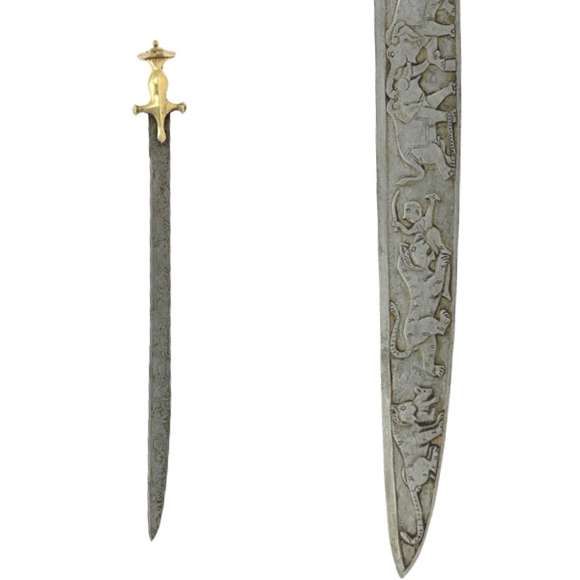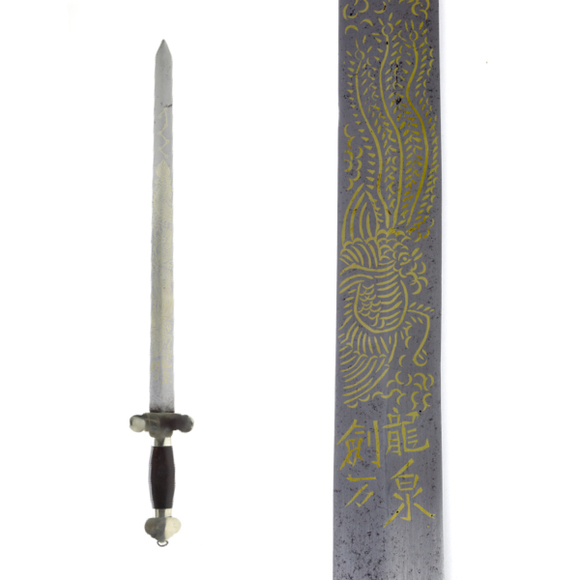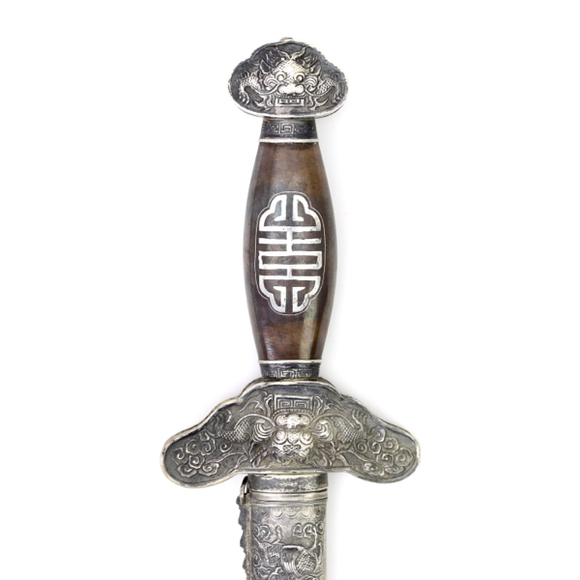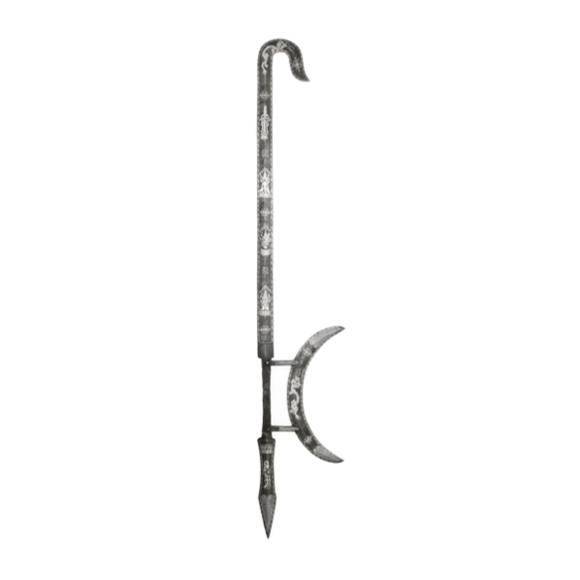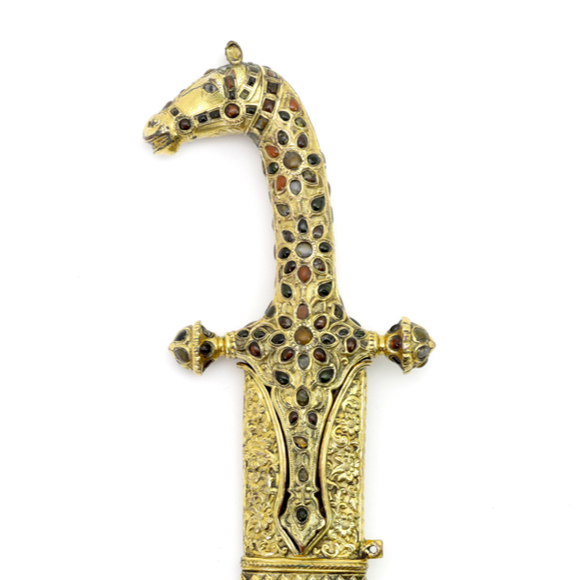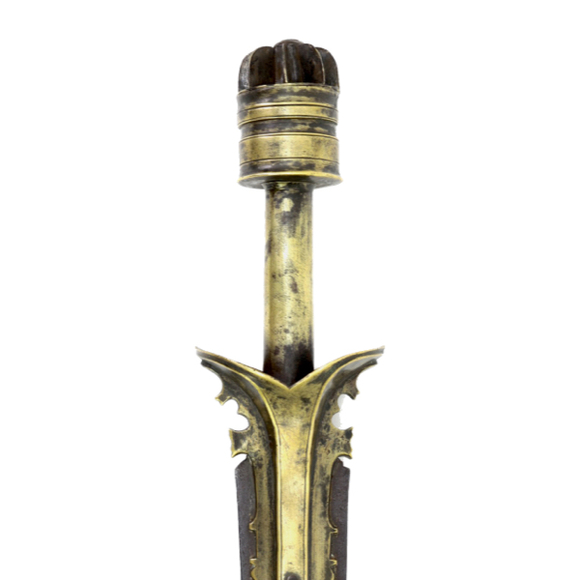Language: Urdu
Source: Period source of 1886
Description
Shikārgar is a name given to a style of sword with chiseled hunting scenes on its blade. It is derived off the word shikār (شکار) which specifically means hunting by means of the chase, and gār (گار); Doer, agent. It appears among others in Hendley's work of 1884.1
Most shikārgar are of the talwar or shamshir style with narrow, curved blades, but sometimes kirach or other types are seen.

A north Indian shikārgar.
Metropolitan Museum accession number 36.25.1506a, b.
Provenance: Oldman, Stone.
Origin of the term
From the Persian
Shikār (شکار); Prey, game; the chase, hunting; plunder, booty, pillage, rapine, spoil; perquisites; (in comp.) hunting, seizing, as jān-shikār "a ravisher of hearts" (see also جان شکر); — shikār shudan, To be taken captive, to be seized; — shikār zadan, To kill game; — shikār kardan, ba-shikār raftan, To hunt, to take for a hunt.2
-Francis Joseph Steingass, 1892
In old Urdu-English dictionaries
Shikār (شکار) means; 1. Hunting, chase. 2. Prey, game. 3. Plunder. 4. Perquisites.
Gār (گار) Doer, agent. Shikār-gāh (شکارگاه); Place for hunting in, chase.3
-John Shakespear, 1834
Notes
1. See for example a piece owned by the Maharajah of Jeypore, drawings of which are published in Hendley; Memorials of the Jeypore Exhibition 1883. Volume 1. Industrial Art. Plate X.
2. Steingass, Francis Joseph. A comprehensive Persian-English dictionary, including the Arabic words and phrases to be met with in Persian literature. London: Routledge & K. Paul, 1892.
3. Shakespear, John. A dictionary, Hindustani and English: with a copious index, fitting the work to serve, also, as a dictionary of English and Hindustani. 3rd ed., much enl. London: Printed for the author by J.L. Cox and Son: Sold by Parbury, Allen, & Co., 1834.

